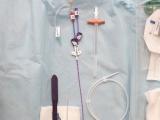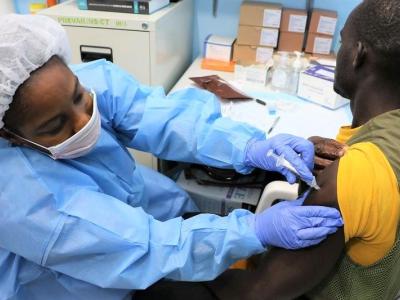Providers at a national telemedicine practice who received antimicrobial stewardship training were able to maintain high provider ratings even when they didn't prescribe antibiotics for upper respiratory infections (URIs), researchers reported today in Open Forum Infectious Diseases.
Although the retrospective study found that the odds of a 5-star rating were higher for visits with an antibiotic prescription, they were also higher for visits with a non-antibiotic prescription and for longer visits. And the rate of antibiotic prescribing for URIs—one of the most frequent indications for telehealth consultations—was significantly lower than found in previous telemedicine studies.
The study was conducted at Included Health, a national virtual medicine practice where providers had complete antibiotic stewardship training during onboarding and had access to antibiotic stewardship guidelines and ongoing education. To estimate the association between prescription receipt and provider 5-star rating, researchers analyzed visits by adult patients diagnosed as having a URI or bronchitis from May 2021 to April 2022.
High satisfaction, with or without antibiotics
Of the 68,607 visits to 298 providers over the study period, approximately 75% were for a URI, 14.2% (30.2% of bronchitis and 9.8% of URI visits) included an antibiotic prescription, and 62.2% (65% of bronchitis and 62% of URI visits) received a non-antibiotic prescription. The average visit duration was 9.2 minutes, and the average patient age was 37.1 years.
More than 95% of visits had a 5-star rating. The odds of a 5-star rating were higher for visits with an antibiotic prescription (adjusted odds ratio [AOR], 2.56; 95% confidence interval [CI], 2.03 to 3.23) and a non-antibiotic prescription (AOR, 1.55; 95% CI, 1.34 to 1.79) than for those without a prescription. Each additional minute of visit duration also increased the odds of receiving a 5-star rating (AOR, 1.03; 95% CI, 1.02 to 1.05), as did a bronchitis diagnosis.
The results are similar to previous telemedicine studies that have found links between higher patient satisfaction and receipt of an antibiotic. A 2018 study of telemedicine providers found the odds of a 5-star rating were more than three times higher with receipt of an antibiotic prescription. That study also found that 66% of visits for a respiratory tract infection resulted in an antibiotic prescription.
Such findings, which aren't limited to telemedicine, have led to concerns that the desire to avoid poor patient ratings is contributing to antibiotic overprescribing.
Stewardship initiatives key
But those studies were conducted at telemedicine providers that did not have stewardship initiatives. The authors of the current study suggest the antibiotic stewardship initiatives at Included Health, which include training providers to explain why antibiotics aren't indicated for certain diagnoses, may have driven the lower antibiotic prescribing rates—almost 75% lower for URI and 50% lower for bronchitis than observed in previous studies—and the smaller odds ratios observed in their study.
In addition, they note that the high proportion of 5-star ratings they found among all patient subgroups—92.4% with no prescription, 95.6% with a non-antibiotic prescription, and 97.7% with an antibiotic prescription—raise the question of whether the observed association between antibiotic receipt and 5-star rating is meaningful.
"Taken together, our findings support that telemedicine providers can maintain high provider ratings and still adhere to antibiotic stewardship by providing supportive care, such as prescriptions for non-antibiotics, and dedicating more time to explaining treatment choices, including when antibiotics are unnecessary," they wrote.






















